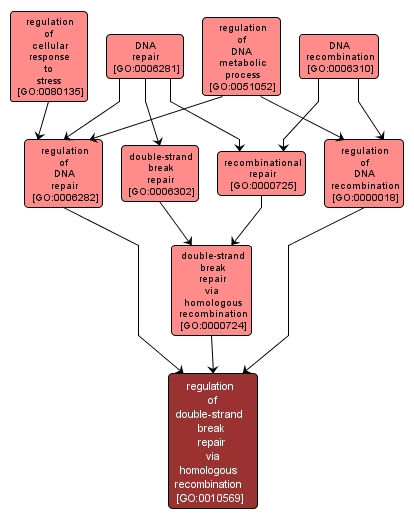GO TERM SUMMARY
|
| Name: |
regulation of double-strand break repair via homologous recombination |
| Acc: |
GO:0010569 |
| Aspect: |
Biological Process |
| Desc: |
Any process that modulates the frequency, rate or extent of the error-free repair of a double-strand break in DNA in which the broken DNA molecule is repaired using homologous sequences. |
|

|
INTERACTIVE GO GRAPH
|














